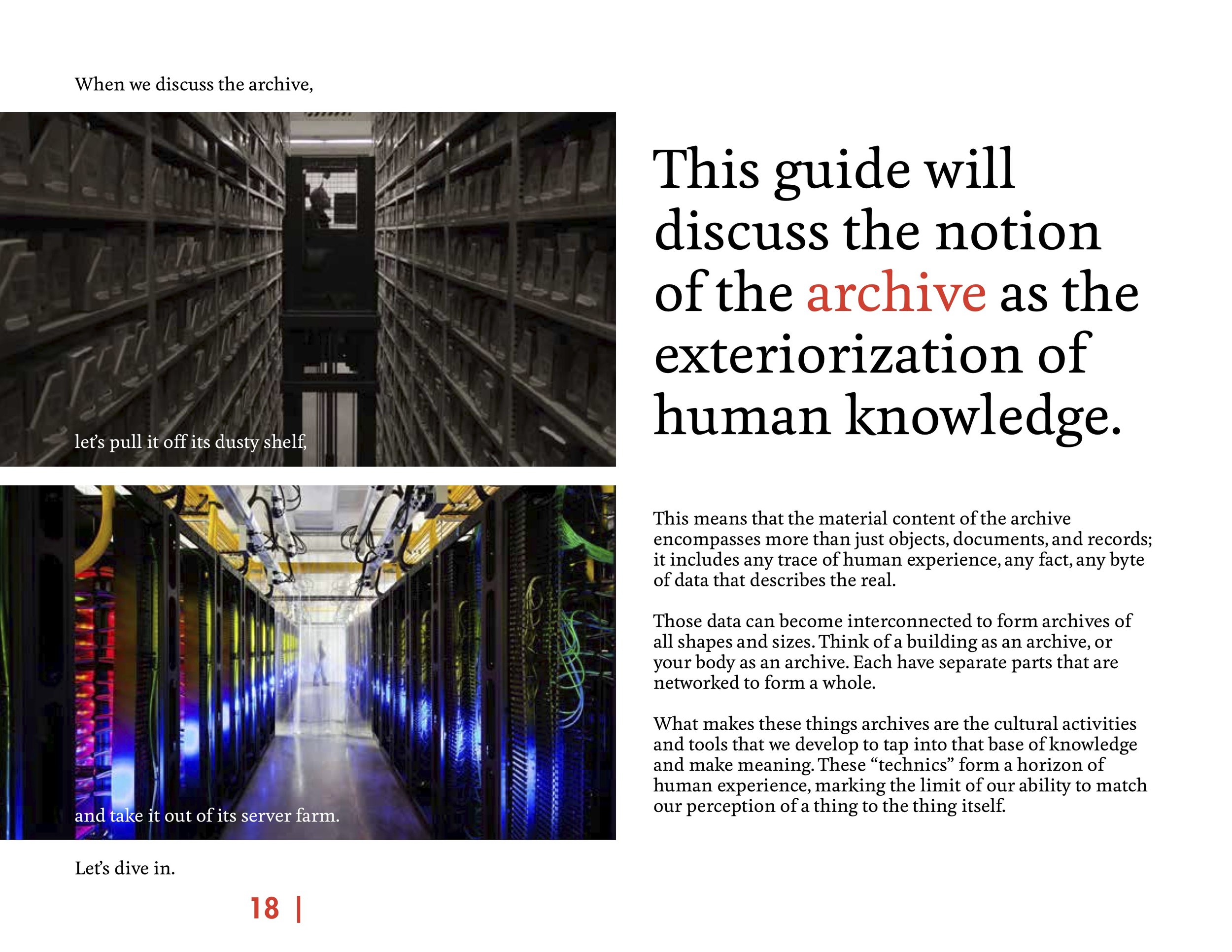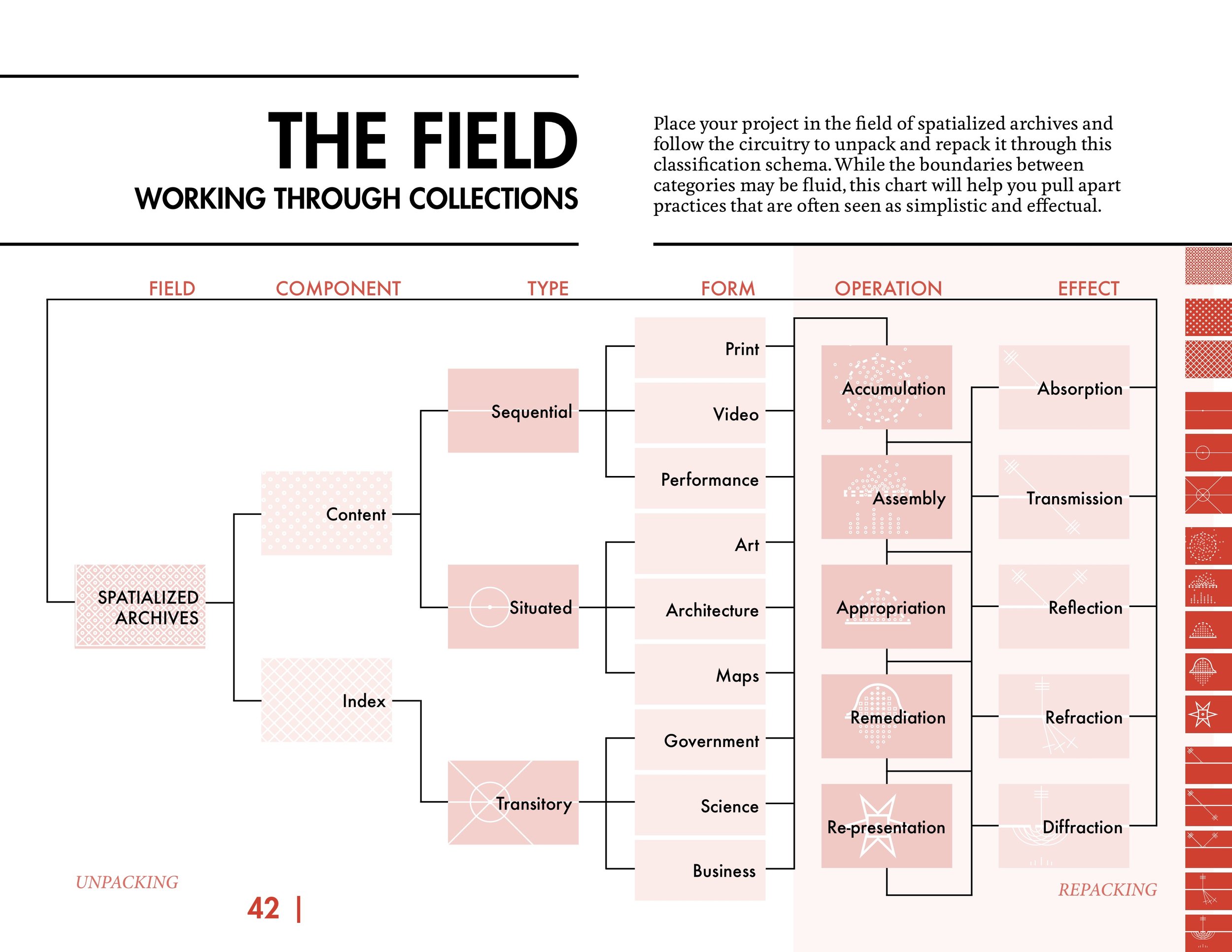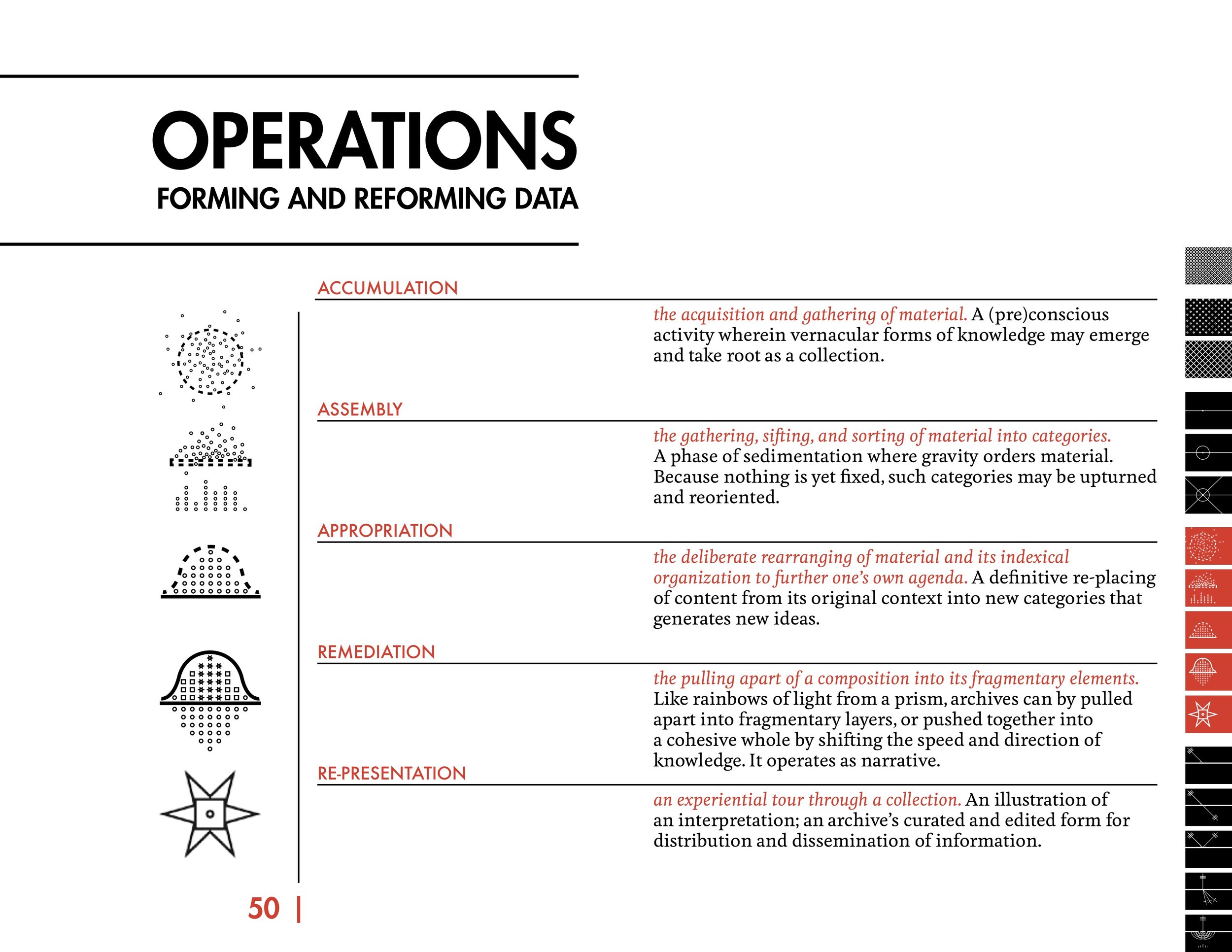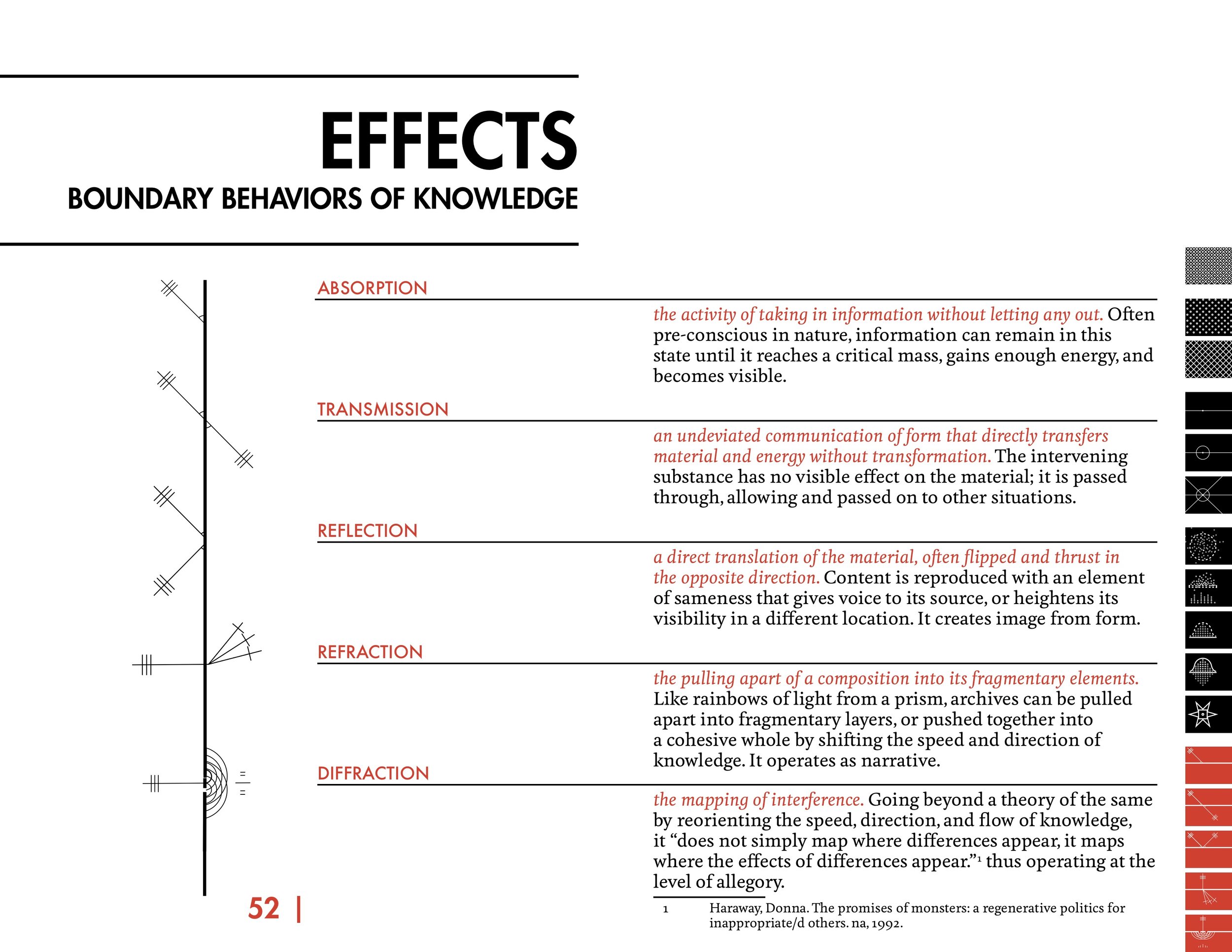
CRITICAL THEORY
Field Guide to Spatialized Archives
Role: Author, Designer
Client: Harvard Graduate School of Design, Master’s Thesis
Year: 2015
A taxonomy for discovery in data.
PROBLEM
The proliferation of powerful phones with cameras and the ubiquity of social media enabled us to warehouse massive amounts of digital information about the world and ourselves on our personal devices, and on the servers of private corporations and governmental agencies.
Information, such as municipal data, or satellite imagery, has opened up new possibilities for analysis, interpretation, and representation.
But who owns these data and what they do with them presents as many problems as it does opportunities.
SOLUTION
The Field Guide to Spatialized Archives helps people find meaning in their mountains of data. It identifies types of spatialized archives, and the operations and effects of working through data. Instead of positioning this schema as a determinist protocol that mimicked the ways in which people were embracing algorithmic solutions to humanist problems, I sought to shift the discourse to encourage more skepticism of data, and to instill an appreciation for the ways in which it is socially constructed. The Field Guide makes room for a practice based in pragmatism, experiential knowledge, and critical reflection to help people through their own process of discovery, so they too can become comfortable and confident when navigating through unknown spaces.
OUTCOME
Completed Field Guide fulfilled a thesis requirement for a Master in Design Studies
Research informed the Beautiful Data II, a workshop sponsored by the Getty Foundation and organized by the metaLAB at Harvard
Published here for the first time, this guide offers space for further research.




